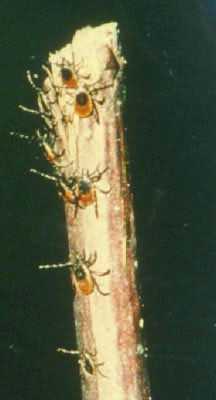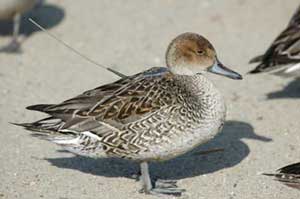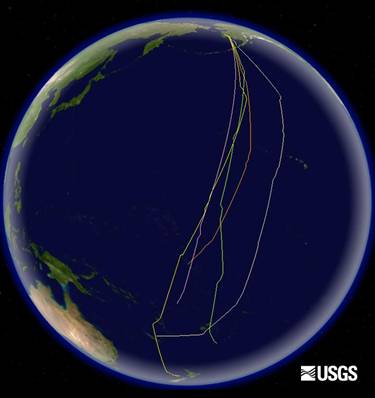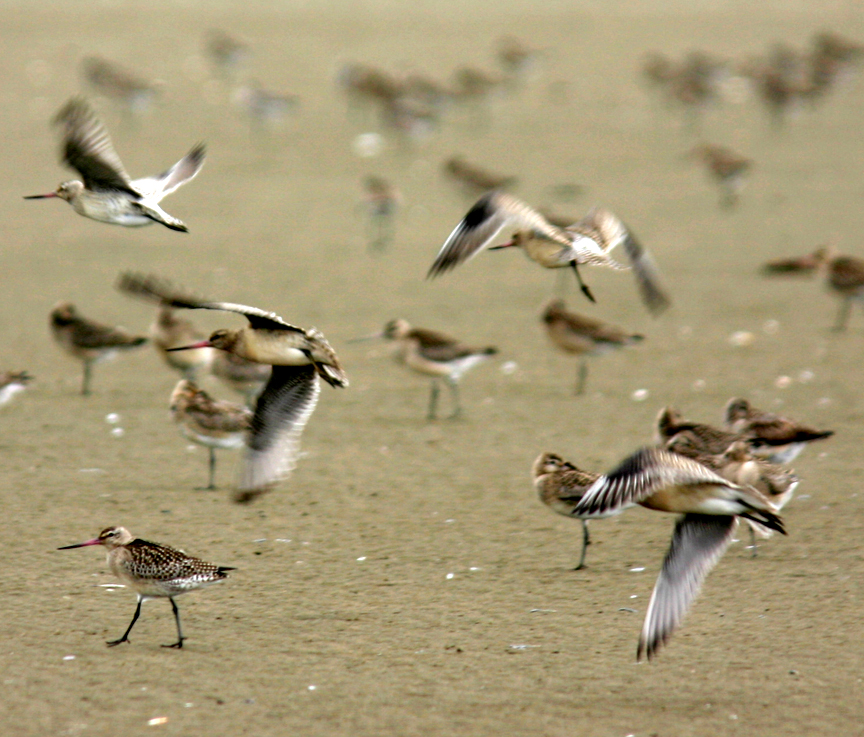- Home
- About S&T
- Taxa/Organisms
- Ecosystems
- Issues
- Methods & Tools
- Reports & Publications
- Location
- Search
Publisher: USGS | Science Center: Patuxent Wildlife Research Center (PWRC, Laurel) | Format: URL
www.pwrc.usgs.gov — Dr. Howard Ginsberg is studying the transmission of Lyme disease spirochetes in nature using ecological studies of ticks and their vertebrate hosts, and models of spirochete transmission dynamics. Environmental factors that influence tick populations apparently operate on a regional scale. Distribution of vertebrate hosts plays a role in tick More...

Publisher: USGS | Science Center: Pacific Island Ecosystems Research Center (PIERC, Honolulu) | Format: URL
biology.usgs.gov — How is avian pox and malaria impacting native Hawaiian honeycreepers? USGS scientists in Hawaii conduct surveys, develop new diagnostic tools, and test management strategies to understand the impacts of these introduced vector borne diseases on native Hawaiian wildlife.

Publisher: USGS | Science Center: Pacific Island Ecosystems Research Center (PIERC, Honolulu) | Format: URL
biology.usgs.gov — USGS scientists build on the research of ornithologists in the 1800's and 1950's to show whether native Hawaiian birds are in fact highly susceptable to mosquito-transmitted avian diseases such as pox and malaria. The results help explain current population patterns and could potentially aid resource managers in selecting birds for restoration in More...

Publisher: USGS | Science Center: Pacific Island Ecosystems Research Center (PIERC, Honolulu) | Format: URL
biology.usgs.gov — Many native Hawaiian forest birds have become endangered and extinct, possibly due to introduced avian diseases. Scientists use genetics, long term studies, and sentinel chickens and canaries to learn the prevalence and impacts of malaria and avian pox on native Hawaiian forest birds.

Publisher: USGS | Science Center: National Wildlife Health Center (NWHC, Madison) | Format: URL
www.nwhc.usgs.gov — Learn about the West Nile Virus (WNV) from this USGS National Wildlife Health Center's Web page. Contains links to fact sheets and information from other government agencies and organizations.

Publisher: USGS | Science Center: Alaska Science Center (ASC, Anchorage) | Format: URL
alaska.usgs.gov — This study examines the likelihood that migratory birds will transmit highly pathogenic H5N1 avian influenza from Asia to North America, using Northern Pintails (Anas acuta) as a model for viral transmission. Evaluating exchange of avian-borne pathogens between Asia and North America by migratory birds requires an understanding of where birds More...

Publisher: USGS | Science Center: Alaska Science Center (ASC, Anchorage) | Format: URL
alaska.usgs.gov — This project investigates the role of wild migratory birds in the transmission of highly pathogenic avian influenza (HPAI) H5N1. Scientists will determine the precise migratory routes and use of Asian stopover areas by Alaska-breeding Bar-tailed Godwits. Field surveillance sampling targets HPAIH5N1 and non-H5N1 viruses in Alaska and assess More...

Publisher: USGS | Science Center: National Wildlife Health Center (NWHC, Madison) | Format: URL
www.nwhc.usgs.gov — Disease information about avian vacuolar myelinopathy (AVM). The disease attacks the central nervous system of waterbirds such as bald eagles and American coots. AVM resources are linked to from this site, including fact sheets, media releases, wildlife health bulletins, and other links.

Publisher: USGS | Science Center: Biological Informatics | Format: URL
biology.usgs.gov — This web page present samples of genetics and genomics research from the USGS Biological Resources Discipline about the epidemiology of avian diseases.

Publisher: USGS | Science Center: Pacific Island Ecosystems Research Center (PIERC, Honolulu) | Format: URL
biology.usgs.gov — Introduction to Hawaiian studies of native birds: Hawaiian forest birds, endangered Palila (Loxioides baillieu), endangered Nene (Branta sandvicensis), birds elsewhere in the Pacific, waterbirds and seabirds, and endangered Laysan ducks (Anas laysanensis).

Publisher: USGS | Science Center: Pacific Island Ecosystems Research Center (PIERC, Honolulu) | Format: URL
biology.usgs.gov — Scientists in Hawaii are using genetic and molecular techniques to better screen Hawaiian forest birds for chronic avian malaria infections. Chronically-infected birds may hold the key to identifying disease resistance genes, and may be good candidates for forest bird restoration efforts.

Publisher: USGS | Science Center: Alaska Science Center (ASC, Anchorage) | Format: URL
alaska.usgs.gov — This web resource provides information concerning the on-going Research at the USGS Alaska Science Center on birds and avian influenza (bird flu). The site links to quick facts, on-going research, workshop results, monitoring and surveillance, guidelines on how to safeguard against avian influenza, publications and reports, migratory bird More...
